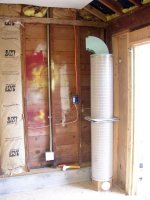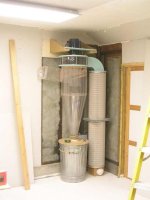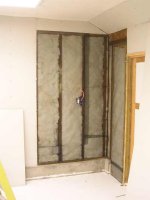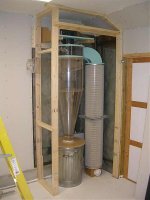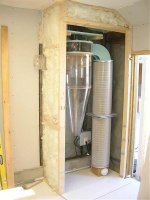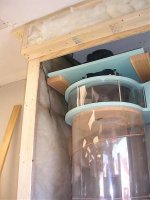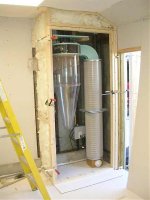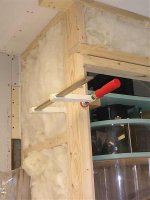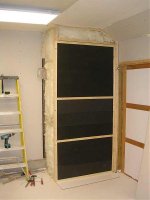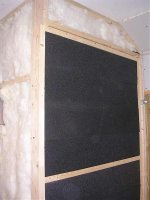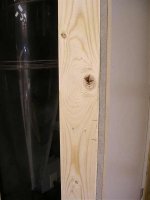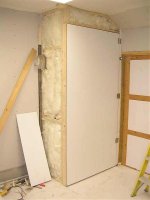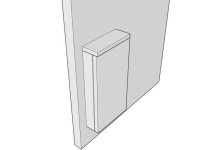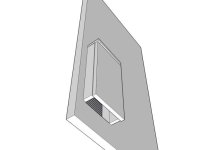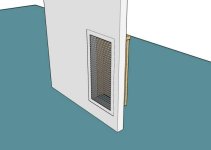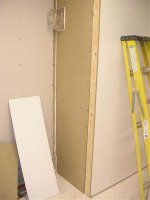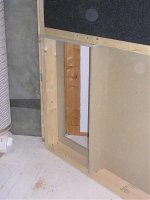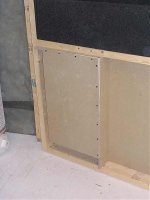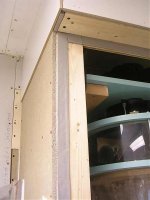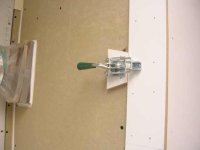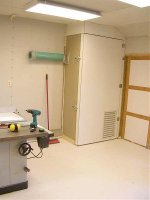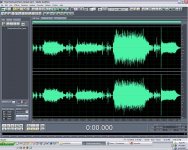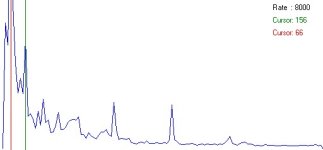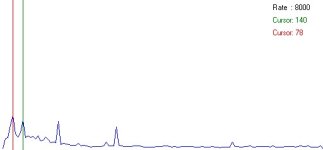Jameel Abraham
New member
I've had a ClearVue for a few months now and am just getting around to setting it up in a more permanent arrangement. Using some info from the threads here and from Ed, I decided to post about this project in case some others might have some tips or suggestions. So here goes.
After reading about the duct board from another thread and talking with Ed about it, I did a little web searching about soundproofing. I quickly learned that there are two approaches to dealing with the unwanted sound. Sound absorption, and sound blocking. Closets and enclosures that utilize open face batts of fiberglass insulation or duct board are using sound absorption. In talking with Bill at soundprooffoam.com I learned that soundproofing can be done more effectively with a thinner material than sound absorption. One caveat though, using an absorbing material (batts or foam or duct board) in conjuction with a blocking material (high mass vinyl barrier) reduces medium to low frequencies.
Some of this stuff is pretty expensive, and I still haven't decided what to go with, still researching at the moment. I'm confident that I'd be satisfied with a typical 2x wall and open face batts like Ed has done, and its very cheap to do. But I also like the idea of using a thinner wall system to save some shop space. Yeah, I know I'm only talking about a couple inches here give or take. We'll see what happens.
Here's the area where the CV will go.
After reading about the duct board from another thread and talking with Ed about it, I did a little web searching about soundproofing. I quickly learned that there are two approaches to dealing with the unwanted sound. Sound absorption, and sound blocking. Closets and enclosures that utilize open face batts of fiberglass insulation or duct board are using sound absorption. In talking with Bill at soundprooffoam.com I learned that soundproofing can be done more effectively with a thinner material than sound absorption. One caveat though, using an absorbing material (batts or foam or duct board) in conjuction with a blocking material (high mass vinyl barrier) reduces medium to low frequencies.
Some of this stuff is pretty expensive, and I still haven't decided what to go with, still researching at the moment. I'm confident that I'd be satisfied with a typical 2x wall and open face batts like Ed has done, and its very cheap to do. But I also like the idea of using a thinner wall system to save some shop space. Yeah, I know I'm only talking about a couple inches here give or take. We'll see what happens.
Here's the area where the CV will go.

